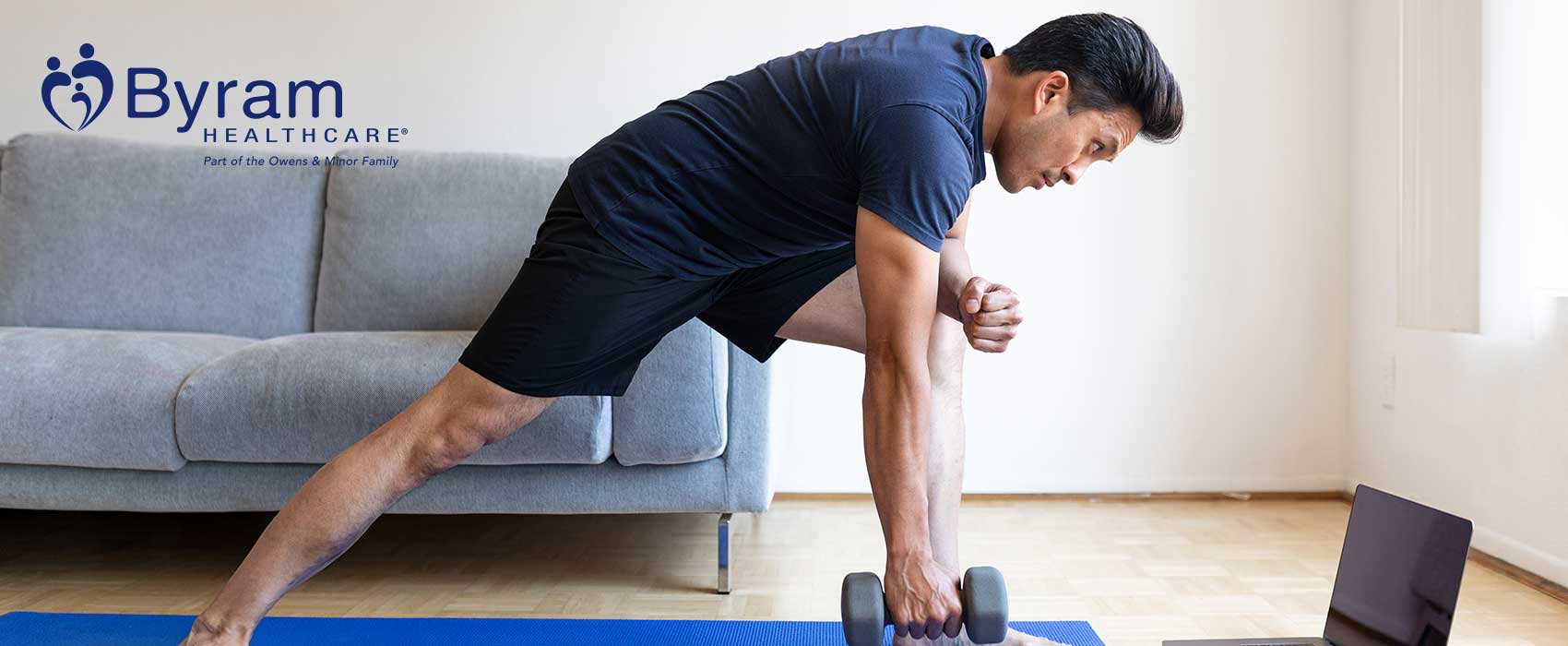
Our bodies were meant to be in motion, but many people live fairly sedentary lives. While you don’t need to get up and start training for a marathon, incorporating some type of exercise into your daily schedule is a great way to stay healthy and reduce your risk of health-related complications. This is especially true for individuals living with diabetes. Exercise can help you burn extra sugar in the bloodstream, increase your sensitivity to insulin, and reduce the need for intensive medication use. However, starting an exercise regimen is easier said than done and sticking with a plan requires a lot of hard work and dedication. To help make this lifestyle change stick, here’s more information on how to form healthy exercise habits with diabetes.
Exercising Recommendations
Being active is a great way to supplement your diabetes management plan and stay healthy. While doing something is better than nothing, it’s still recommended that you aim for the time and intensity goals set in place by the American Heart Association. The goal is to engage in at least 150 minutes of moderate to intense physical activity per week. This can be broken down to about 20 to 25 minutes of aerobic activity each day, or five days of 30-minute activity. It’s also important to include strength training and stretches or exercises that improve flexibility.
Aerobic Activity
Aerobic activity is great for ongoing heart health and circulation. This is the type of exercise that helps strengthen your cardiovascular system as it increases your heart rate and demands a higher intake of oxygen. By incorporating aerobic activity into your workout regimen, you’ll slowly begin to improve your overall fitness levels and build up stamina to continue exercising for longer periods of time.
Strength Training
Lifting weights is another important part of a well-rounded exercise plan. You should incorporate some degree of strength training at least two or three days a week, rotating between different body parts each time. This helps you grow your muscles, which can make it easier for your body to use glucose.
Flexibility
Flexibility is a great way to boost your longevity and keep your body young. Performing a few key stretches throughout the day can help improve blood flow, but the most important time to stretch is before your workout and during your cool down. Stretching beforehand will warm up your muscles, which can help reduce injury. Stretching after a workout will help you improve recovery and prepare your muscles for growth.
If you’ve never engaged in an exercise regimen before, talk to your doctor about recommendations for a physical trainer. This will provide you with the right guidance on strength training, aerobic activity, and stretching for your experience level and age. You don’t have to continue working with a trainer forever, but it’s a good way to develop some base knowledge while learning proper form and resistance levels.
Easy Ways to Get Started
The biggest challenge that many people have regarding exercise is consistency. Individuals will create ambitious goals with unrealistic schedules and quickly find that it’s impossible to maintain with their lifestyle and prior responsibilities. The best way to reap ongoing benefits is to find something that’s suited for your current fitness level without requiring too much time.
Choose Something You Enjoy
The best way to find a workout plan that you’ll actually stick to is to choose something you enjoy. If you hate running, don’t try to train for a marathon. Chances are, you’ll end up giving up a few days in. Instead, do something you find fun like a Zumba class or swimming. This helps decrease the likelihood that you’ll make excuses for skipping workouts throughout the week. When you look forward to exercising, you’re more likely to stay committed.
Start Small
It’s also important to start small and gradually progress in time and intensity as you move forward. Going from not exercising at all to trying to schedule aerobic activity and strength training five days a week is quickly going to lead to burnout. Pick a simple routine that fits into your schedule to begin.
Find a Partner
Another great way to form healthy exercise habits when living with diabetes is to find a workout buddy. Exercising with a partner can help you build accountability and maintain a positive mindset about exercising. It also gives you time to socialize and catch up with your friends, which is important for your mental health. Find a partner, make a commitment, and hold each other accountable.
Set a SMART Goal
If you want to work towards a goal, make sure that it’s SMART—specific, measurable, achievable, relevant, and time-bound. The more specific your goals are, the easier it will be to measure your progress. Talk to your doctor about recommendations for diabetes-related exercise goals and continue to test your blood sugar and A1C levels as you work towards each milestone. This can help you see quantifiable results before you notice any physical changes, which will ensure you stay motivated to keep going.
Schedule Time
Schedule time to exercise on your calendar, just as you would a meeting with a client. Then, stick to that time instead of finding excuses to put it off. Once you’ve blocked off 30 minutes or an hour on your calendar, there’s no reason for you to reschedule.
After you begin exercising, you may notice that your medication administration needs to change. Your muscles begin to demand higher amounts of energy, which comes directly from glucose. Therefore, the more you exercise, the more glucose you burn. Exercise allows individuals with diabetes to use glucose without the assistance of insulin. Once you finish a workout, these effects can continue for up to 24 to 48 hours following. Make sure to speak with your doctor about how exercise will affect your insulin dosage and any other medications you’re taking.
Staying Healthy While Exercising with Diabetes
While exercising is absolutely essential for ongoing diabetes management, it’s important to discuss any new regimens with your doctor. This is true for individuals who are just beginning or those who are looking to increase the intensity of a current plan. Your doctor will be able to make recommendations based on your lifestyle and health status, which will ensure you stay safe and healthy during exercises.
Once you’ve gotten your doctor’s approval, begin scheduling workouts into your week. Prior to engaging in any sort of exercise, always check your blood sugar. If your reading is lower than 100 mg/dL, eat a small snack that has about 15 to 30 g of carbohydrates. Subsequently, you can take a glucose tablet. This is important for reducing the risk of low blood sugar, hypoglycemia, during exercising. If you begin to experience symptoms of low blood sugar, stop working out, try to raise your glucose levels, and contact a doctor. If your reading is higher than 240 mg/dL, you may be experiencing hyperglycemia. In this case, it may not be safe to perform any exercises until your blood glucose levels decrease. Individuals who exercise with hyperglycemia have a high risk of experiencing diabetic ketoacidosis, which is a life-threatening complication that requires immediate attention.
Since diabetes can increase the risk of foot ulcers and other slow-healing wounds, it’s important to take the proper precautions. Work with a podiatrist to find a good fitting shoe and wear cotton socks to avoid friction burns. After you’re done exercising, take a shower and perform a full body check. During this time, look for any blisters, sores, cuts, or signs of irritation. Keep an eye on any signs of injury and call your doctor if they don’t begin to heal after about two days.
As mentioned, always talk to your doctor before adopting a new eating plan or exercise regimen, ask about changes to insulin administration and medication use, and discuss any concerns. While exercising can help, managing your diabetes is always the most important task at hand. Continue to regularly check your blood glucose levels and contact a medical professional if you experience distressing symptoms.
To manage your diabetes effectively and reduce your risks of serious complications, Byram Healthcare has a range of continuous blood glucose monitors. We also offer diabetes support and educational materials to give you everything you need for comprehensive care.




